The History Of Mitsubishi Lancer Evolution

The Mitsubishi Lancer Evolution, colloquially known as the Lancer Evo, or Evo, is a car manufactured by Mitsubishi Motors. There have been ten official versions to date, and the designation of each model is most commonly a roman numeral. All of them share a two litre, turbocharged engine and four-wheel drive system. Evolution models prior to version VII were the homologation models for Mitsubishi's efforts in the World Rally Championship. In order to follow these rules, the Evolution was based on the same unibody as the Lancer.
The Evolution was originally intended only for Japanese markets but demand on the 'grey import' market led the Evolution series to be offered through RalliArt dealer networks in the United Kingdom and in various European markets from around 1998. Mitsubishi decided to export the eighth generation Evolution to the United States in 2003 after witnessing the success Subaru had in that market with their Impreza WRX, a direct competitor in other global regions.
Japanese-spec cars were limited by a gentleman's agreement to advertise no more than 276 hp (205 kW), a self imposed limit, 280hp (210kW) by the state, a mark already reached by Evolution IV. Therefore, each subsequent version has unofficially evolved above the advertised power figures, with the Japanese-spec Evolution IX reaching a real power output of around 321PS (317hp/ 236kW).
Various versions available in other markets, particularly the UK, have official power outputs up to 405 bhp (302 kW). Even standard components are considered 'tuned' compared to other vehicles. For instance, the flywheel on normal cars weigh about 12-15 kilograms (26-33 pounds), but Evolution flywheels weigh a mere 6 kilograms (13 pounds) for very quick engine response.
In 2008, the latest generation Lancer Evolution X was launched worldwide, and featured an all-new 291 hp (217 kW) inline four-cylinder turbocharged engine and a full-time all wheel drive powertrain.
The Evolution I was introduced in 1992 to compete in the World Rally Championship. It used the 2.0L turbocharged DOHC engine and 4WD drivetrain from the original Galant VR-4 in a Lancer chassis, and was sold in GSR and RS models. The latter was a stripped-down club racing version that lacked power windows and seats, anti-lock brakes, a rear wiper, and had steel wheels to save approximately 155lb (70kg) less than the 2,730 lb (1,238 kg) GSR, while the former came with all of the conveniences of a typical street car. It came with Mitsubishi's 4G63 engine producing 250 PS (244hp/ 182 kW) at 6000 rpm and 228 ft·lbf (309N·m) at 3000 rpm, along with all wheel drive which would become a trademark on all Evolution models. 5,000 of the first generation Evolutions were sold between 1992 and 1993.
The successful Evolution I was changed in December 1993, and was produced until 1995. It consisted mainly of handling improvements, including minor wheelbase adjustments, larger swaybars, bodywork tweaks including a larger spoiler, and beefier tires that were 10mm (0.4in) wider. Power output was increased to 256PS (252hp/ 188kW) from the same engine and torque was unchanged for both GSR and RS models.
January 1995 saw the arrival of the Evolution 3. The Evolution 3 looked more serious, with its new nose molding (to channel air better to the radiator, intercooler, and brakes). New side skirts and rear corners, while the rear wing had grown again to reduce lift. Under the vented aluminum bonnet a new TDO5-16G6-7 turbo, new exhaust system and increased compression brought another 10PS (10hp/ 7kW) power rise, Torque output was unaltered, apart from a higher final drive ratio. Both GSR and RS still used the same 5 speed quaife gearbox. Interior tweaks were limited to a new Momo steering wheel (GSR only) and new fabric on the Evolution 2 type Recaros. The specs on this vehicle were an engine 4G63T size of 1997 cc, 270bhp (201kW) at 6250 rpm, torque was 228lb·ft (309N·m) at 3000 rpm, weight is 1260 kg (RS 1190 kg).
The Lancer platform was completely changed in 1996, and along with it the Evolution, which had become extremely popular throughout the world. The engine and transaxle was rotated 180° to better balance the weight and eliminate torque steer. There were two versions available, The RS and GSR. The RS version was produced as a competition car with a limited-slip front differential and a friction type LSD at the rear. It also came with GLX seats and 16" (41 cm) steel wheels as these were items that would be replaced by anyone entering the car into competition events. The RS also had wind up windows, no air conditioning, and a few extra brace bars to strengthen the chassis, one behind the front grill and the other across the boot floor. The RS also had a factory option of thinner body panels and thinner glass. The GSR and the RS shared a new twin scroll turbocharger which helped to increase power to 280PS (276hp/ 206kW) at 6,500 rpm and 260ft·lbf (352N·m) of torque at 3,000 rpm. Mitsubishi's new Active Yaw Control appeared as a factory option on the GSR model, which used steering, throttle input sensors and g sensors to computer-hydraulically controlled torque split individually to the rear wheels and as a result the 10,000 Evolution IVs produced all sold quickly. The Evolution IV can be distinguished by its two large fog lights in the front bumper (option on RS version), and the newly designed tail lights on the rear, which became a standard design to Evolution VI, which would become yet another trademark of the Evolution series. This new generation was slightly heavier than previous Evos—the GSR in particular due to the added technology systems—but to counter this the car produced even more power—the weight of the RS being 1260kg (2778lb) and the GSR being 1345kg (2965lb).
In 1997, the WRC created a new "World Rally Car" class, and while these cars still had to abide by Group A standards, they did not have to meet homologation rules. Mitsubishi redesigned the Evolution IV with this in mind and introduced the Evolution V in January 1998.
Many aspects of the car were changed such as:
- The interior was upgraded in the GSR version with a better class of Recaro seat.
- The body kit had flared arches at the front and rear and a new aluminium rear spoiler replaced the IV FRP version and gave an adjustable angle of attack to alter rear down force.
- The track was widened by 10mm (0.4in), the wheel offset changed from ET45 to ET38 along with the wheel diameter which rose from 16" to 17" to accommodate Brembo brakes which were added to enhance braking.
- In addition the brake master cylinder bore increased by 0.3millimetres (0.01in).
- The engine was strengthened in a few areas and the cam duration was increased. The pistons were lighter with a smaller skirt area. 510 cc injectors were replaced with 560 cc injectors for better engine reliability due to more electrical "headroom" and the ecu was changed to include a flash ROM.
Furthermore, the turbocharger was again improved. Torque was increased to 275ft·lbf (373N·m) at 3000 rpm. Power officially stayed the same, at 280PS (276hp/ 206kW) as agreed by Japan's automotive gentlemen's agreement that all cars would have 276 or less hp, but some claim horsepower was actually somewhat higher.
The Evolution VI's changes mainly focused on cooling and engine durability. It received a larger intercooler, larger oil cooler, and new pistons, along with a titanium-aluminide turbine wheel for the RS model, which was a first in a production car. Also, the Evolution VI received new bodywork yet again, with the most easily spotted change in the front bumper where the huge fog lights were reduced in size and moved to the corners for better airflow. A new model was added to the GSR and RS lineup; known as the RS2, it was an RS with a few of the GSR's options. Another limited-edition RS was known as the RS Sprint, an RS tuned by Ralliart in the UK to be lighter and more powerful with 330hp (246kW).
Yet another special edition Evolution VI was also released in 1999: the Tommi Makinen Edition, named after Finnish rally driver Tommi Makinen that had won Mitsubishi four WRC drivers championships. It featured a different front bumper, Red/ Black Recaro seats (with embossed T. Makinen logo), 17" ENKEI white wheels, a leather MOMO steering wheel and shift knob, a titanium turbine that spooled up quicker, front upper strut brace, lowered ride height (with tarmac stages in mind), and a quicker steering ratio. Amongst other colours, the Evo VI came in an exclusive shade of red with special decals, replicating Tommi Makinen's rally car's colour scheme. This car is also sometimes referred to as an Evolution 6½, Evolution 6.5, or TME for short.
In 2001, Mitsubishi was forced by the FIA to race in the WRC using WRC rules for building a car instead of the Group A class rules, and thus did not need to follow homologation rules. The Evolution VII was based on the larger Lancer Cedia platform and as a result gained more weight over the Evolution VI, but Mitsubishi made up for this with multiple important chassis tweaks. The biggest change was the addition of an active center differential and a more effective limited-slip differential, while a front helical limited-slip differential was added. Torque was increased again to 284ft·lbf (385N·m) with engine tweaks that allowed greater airflow, and horsepower officially remained at 280PS (276hp/ 206kW).
The introduction of the Evolution VII also marked the first time an automatic drivetrain was included within the model lineup—the GT-A. Seen as the 'gentleman's express' version of the visually similar VII GSR, the GT-A model was only produced in 2002 and had the following distinguishing interior and exterior specification: GT-A-only diamond cut finish 17-inch (430mm) alloy wheels, clear rear light lenses and all-in-one style front headlights (later used on the Evolution VIII). The GT-A had the option of either no spoiler, the short spoiler (as later used on the Evolution VIII 260) or the thunderspoiler as used on the standard Evolution VII models. The most distinguishing feature was a smooth bonnet with no air-grills on it at all. Although offering inferior cooling capabilities, the bonnet was designed to give a cleaner line through the air with less air resistance at motorway speeds.
Interior could be specified with factory options of a deluxe velour interior, full leather or the Recaro sports seats. The GT-A interior was different in that it had chromed door handles, a different instrument panel (to show the gear selection) and chrome edged bezels around the speedo and tach. The GT-A also had additional sound deadening installed from the factory and the engine manifold and downpipe had been engineered to be quieter.
The 5-speed automatic gearbox had what Mitsubishi called "fuzzy logic", which meant that the car would learn what the driver's driving characteristics were like and would adapt the gear change timings and kick down reactions accordingly. The gears could be manually selected as with most tiptronics via steering wheel + and - buttons (a pair both sides) or via selecting the tiptronic gate with the gear lever. Power was down a little from the standard manual cars with a very usable 272bhp (203kW). The GT-A gearbox did not appear again in the Evolution VIII but has been installed in the estate version of the Evolution IX Wagon.
The Evolution was changed again in 2003, this time sporting Super Active Yaw Control to handle traction and a 6-speed manual gearbox. It was available with 280 PS (276 hp/ 206 kW) in three trims: standard (GSR in Japan), RS (devoid of all excess components, such as interior map lights, power windows/ doors, and radio) and MR. RS Editions came with a revised limited-slip front differential. The new Evolution also sported Altezza taillights.
The Lancer Evolution VIII is unique among its successors and predecessors, since it is so far the only Evo that used the same central semi-triangle core that was used by Lancer, Adventure, Strada, Grandis, Montero and Outlander.
The Lancer Evolution VIII MR uses slick-response Bilstein shocks for improved handling. The aluminium roof panel and other reductions in body weight have lowered the centre of gravity to realize more natural roll characteristics. Detail improvements have also been made to Mitsubishi’s own electronic all-wheel drive, to the ACD 5 + Super AYC 6 traction control and to the Sports ABS systems. The Lancer Evolution VIII displayed at the 2003 Tokyo Motor Show took the MR designation traditionally reserved for Mitsubishi Motors high-performance models and used first on the Galant GTO. Other parts on the MR include BBS alloy wheels, Bilstein shocks, and an aluminium roof. In the United Kingdom, many special Evolutions were introduced, which included FJC300, FJC320, FJC340, and FJC400 variants. They each came with 305, 320, 340, and 400 hp (227, 239, 254 and 298 kW), respectively.
The FQ400, sold through Ralliart UK, produces 302.13 kW (405.2 hp), from its 2.0 L 4G63 engine as the result of being specially modified by United Kingdom tuning firms Rampage Tuning, Owen Developments, and Flow Race Engines. At 202.9 hp (151.3 kW) per litre, it has one of the highest specific output per litre of any roadcar engine. With a curb weight of 3200 lb (1450 kg), it achieves 0-60 mph in 3.5 seconds, 0-100 mph in 9.1 seconds, 1/ 4 mile in 11.9 seconds at 121mph (195km/ h), and top speed is 176 mph (283km/ h), whilst costing £47,000. BBC's television series Top Gear demonstrated that the stock FQ-400 could surprisingly keep up with a Lamborghini Murcielago around a test track. The Stig recorded a Top Gear Power Lap Times of 1 minute 24.8 seconds, 4.2 seconds quicker than the Murcielago's time of 1 minute 29 seconds. In a similar test conducted by UK supercar magazine evo, the Evolution was able to lap the Bedford Autodrome faster than an Audi RS4 and a Porsche Carrera 4S.[citation needed]
The Lancer Evolution VIII was also the first Evolution to be sold in the United States, spurred by the success of the Subaru Impreza WRX which had been released there just three years prior.[citation needed] The Evolution VIII found its true competition in the Subaru Impreza WRX STI model the same year as the Evolution VIII's US introduction. However, the internal components for the American versions were largely stripped-down versions of the specifications for the Japanese Lancer Evolution VIII. No US-spec Evolution model prior to the Evo X has active yaw control, including the 2006 Evolution IX. The American 2003 and 2004 GSRs are without the helical limited-slip front differential and 6-speed manual transmission. The 2004 US spec RS models, however, do have a front helical limited-slip differential. All 2003, 2004 and 2005 RS and GSR models have the Japanese Evolution VII's 5-speed transmission. The MR edition was introduced to the US in 2005, with ACD and the only model with a 6-speed transmission. The 2005 US spec RS and GSR have the ACD standard, and the front helical limited-slip differential is now standard on all models. The timing and tuning are also slightly lower than its Japanese counterpart, allowing it to adhere to the strict emissions regulations of the United States. However, the US version has a quarter mile time of a respectable 13.1 seconds[citation needed].
Most Evolution VIIIs have a carbon fiber rear spoiler with matching body-color endplates. Furthermore, the US version of the Lancer Evolution VIII 2003-2005 were given bulkier rear bumpers than their Japanese counterparts to accommodate US safety laws in the form of the metal rear crash bar. All Evos have lightweight aluminum front fenders and hood. MR and RS editions have an aluminum roof. Additionally, MR Editions come equipped with 6-speed transmission, bilstein shocks, and factory optional BBS wheels.
The basic RS Edition does not come with power windows, locks or mirrors, an audio system, map lamps or an Anti-lock braking system. All Evo VIII RS models sold in the US have air conditioning system.
Mitsubishi introduced the Lancer Evolution IX in Japan on March 3, 2005, and exhibited the car at the Geneva Motor Show for the European market the same day. The North American markets saw the model exhibited at the New York International Auto Show the following month. The 2.0 L 4G63 engine has MIVEC technology (variable valve timing), boosting official power output at the crankshaft to 286 hp (213 kW) and torque to 289 ft·lbf (392 N·m). The Evolution VIII first offered in 2003 would produce dynamometer readings of approximately 225 WHP and 225lb·ft (305N·m). WTQ with a flywheel power rating of 271/ 273 respectively. The Evolution IX typically pulls 255 WHP and 250 WTQ on a wheel dynamometer, a difference of 30hp (22kW).
The USDM Lancer Evolution IX models (standard; "GSR" in some markets), RS, SE, and MR) varied slightly in their performance capabilities. Subtleties unique to each model accounted for variations in acceleration, handling and top speed. The RS excluded features standard on the standard, SE and MR models (stereo system, power windows and locks, rear wiper, rear wing, trunk lining and sound insulation). The resulting weight savings of over 60lb (27kg) gave the RS a subtly sharper handling responsiveness that helped it shave fractions of a second off the lap times of other models on an identical course.[citation needed] However, the top-end MR had a high top speed, since its 6th forward gear allowed it to reach 165mph (266km/ h) at 7,000 rpm compared to 157mph (253km/ h) at 7,000 rpm in 5th for the RS and middle-positioned IX models.[citation needed] (Note: Data relevant to U.S. model specifications)
The IX MR retained the features of the Evolution VIII MR, like Bilstein shocks, a 6-speed manual transmission, a rooftop vortex generator, BBS forged wheels, HID xenon headlights, foglights, accessory gauge package, "zero lift" kit, special badging and an aluminum roof. All models continued to sport Recaro bucket seats, Brembo brakes and MOMO steering wheels. Additional revisions from 2005 included a closer gear ratio for the 5-speed manual transmission, new lighter Enkei wheels on non-MR models, a redesigned front end with a more efficient air dam (the most noticeable feature are the two small oval ducts to cool the intercooler pipes), and a new rear bumper with a diffuser undersurface to smooth out the airflow coming out of the car for non-US models. In an effort to reduce the price increase on the Evolution IX model,[citation needed] HID headlights were no longer standard equipment on the base IX (nor were they standard on the 2005 VIII), and were available only in the SSL package (Sun, Sound, and Leather), SE (Special Edition) and MR trims.
Three trims were available for Japan, Asia and Europe. Although all models used the same 286 hp (213 kW) engine, the torque differed from one model to another. In Europe, however, the Evolution IX was advertised to have 280 hp (206 kW). The GSR produced 295 ft·lbf (400 N·m) of torque, while the RS and GT produced 300 ft·lbf (407 N·m).
- RS - "ralli sport", revised 5-speed, aluminium roof, gauge pack, minimal interior, LSD and a titanium-magnesium turbine, left-hand drive option available.
- GT - revised 5-speed, this is basically the RS mechanically, but with some of the GSR's features (mainly interior pieces).
- GSR - 6-speed, Bilstein monotube shocks, aluminium roof, gauge pack, SAYC (Super Active Yaw Control), and double-din radio (this is roughly equivalent to the USDM MR).
In the United Kingdom, the Evolution IX used a different model scheme based on the car's horsepower. There were initially three models available: the FQ-300, FQ-320 and FQ-340 each with around 300, 320 and 340bhp (254kW) respectively. An FQ-360 model was subsequently released as a successor to the Evolution VIII FQ-400. While the new FQ-360 produced less horsepower than its predecessor, it had more torque at 363lb·ft (492N·m) at 3200 rpm - 8lb·ft (11N·m) more than the FQ-400. All four models were designed to run on super unleaded petrol only.
- FQ-300, 320, 340 - 6-speed, Bilstein monotube shocks, AYC (Active Yaw Control), super unleaded petrol only
- FQ-360 - 6-speed, Bilstein monotube shocks, AYC (Active Yaw Control), Ralliart Sports Meter Kit, carbon front splitter, Speedline alloy wheels, super unleaded petrol only
Four models were available in the US. All models used the same 286 hp (213 kW) engine. All models used a front and rear Limited Slip Differential, and an Active Center Differential.
- Standard - revised 5-speed, standard model
- RS - ralli sport, revised 5-speed, aluminum roof, gauge pack, minimal interior
- SE - Special Edition, aluminum roof/ hood, and front fenders, split seven-spoke forged aluminum BBS wheels in "diamond black" finish, HID headlights with integrated fog lights, red-stitched Recaro seats
- MR - 6-speed, Bilstein monotube shocks, split seven-spoke forged aluminum BBS wheels, aluminum roof, hood, and front fenders, gauge pack, HID headlights with integrated fog lights, vortex generator, and custom MR badging.
All of the American models are the same in power and performance. The only thing that sets them apart is the Evo RS, which is 80lb (36kg) lighter than the MR and SE models.
To the standard (or "GSR") model, the Sun, Sound and Leather package added a power sunroof, HID xenon headlamps with integrated fog lights, a slightly different stereo headunit (with no integral amplifier), slightly upgraded speakers in the front doors and parcel shelf, a 4.1-channel amplifier under the driver's seat, a powered, trunk-mounted Infinity subwoofer, black leather seating surfaces, leather-trimmed door panels, slightly revised center armrests in the front and rear, and separate rear side headrests. This model deleted the GSR's headliner-mounted sunglass holder to make room for the sunroof.
A 2,500-piece, limited edition Evolution IX station wagon was released in Japan soon after the sedan's debut. It used the back end of the Lancer Sportback wagon grafted onto the sedan. Two trim models were introduced: the GT with a six-speed manual transmission and the GT-A with a 5-speed automatic. Other than the station wagon rear end, redesigned seats and some chromed trims, the car's interior was the same as the sedan.
Mitsubishi also developed the Evolution MIEV, based on the Evolutions IX's chassis but with four electric motors connected to the wheels as a test bed for the Mitsubishi In-wheel Electric Vehicle (MIEV) next-generation electric vehicle. The in-wheel motors used a hollow doughnut construction to locate the rotor outside the stator, unlike other electric motors where the rotor turns inside the stator. The result of this was a lighter motor which translated into lower unsprung weight than a system with the motors mounted in the wheels. Each in-wheel motor produced a power output of 68hp (51kW), thus giving a combined output of 272hp (203kW), comparable to that of regular, petrol powered Lancer Evolutions. The car competed in the Shikoku EV (Electric Vehicle) Rally 2005.
The Philippines had the Evolution IX until in August 2008, which was offered in two trims, the entry-level RS offering a 5-speed manual transmission, Brembo 17-in. ventilated discs (4-Pot), Brembo 16-in ventilated drum-in-disc (2-Pot) and almost the same features as to that of the GSR trim in the international version. The MR was the top-of-the-line segment, which offers almost the same feature as to that of the MR trim in the international verision. All of them are powered by a l4 2.0 4G63 turbocharged MIVEC engine.
In 2005, Mitsubishi introduced a concept version of the next-gen Evolution at the 39th Tokyo Motor Show named the Concept-X. Mitsubishi unveiled a second concept car, the Prototype-X, at the 2007 North American International Auto Show (NAIAS).
The Lancer Evolution X sedan features a newly designed 4B11T 2.0 L turbocharged, all-aluminum inline-4 engine. Power and torque depend on the market but all versions will have at least 280PS (205.9kW; 276.2hp) (JDM version), the American market version will have slightly more. The UK models will be reworked by Mitsubishi UK, in accordance with previous MR Evolutions bearing the FQ badge. Options for the UK Evolutions are expected to be between 300hp (220kW) and 360hp (270kW). Two versions of the car will be offered in the U.S. The Lancer Evolution MR, with 6-speed Twin Clutch Sportronic Shift Transmission (TC-SST). The other version is the GSR which will have a 5-speed manual transmission system. The car has also a new full-time all-wheel drive system named S-AWC (Super All Wheel Control), an advanced version of Mitsubishi's AWC system used in previous generations.. The S-AWC uses torque vectoring technology to send different amount of torque to any wheel at any given time.
It also features Mitsubishi's new sequential semi-automatic six speed Twin Clutch SST twin-clutch transmission with steering-mounted magnesium alloy shift paddles. A 5-speed manual gearbox will also be available. Mitsubishi claims that the 5 speed manual transmission has always been preferred in rallying and should be very refined, resulting in a more satisfying drive. New Lancer Evolution will incorporate Mitsubishi's next generation RISE safety body.
The production version of Prototype-X has begun production in Autumn 2007. The Evolution X went on sale October 1, 2007 in Japan then in January 2008 in the USA., February in Canada (as the first version of Evolution in Canada) and in March 2008 in the UK at prices between £27,499 and £37,999. The Twin Clutch SST version was available in Japan from November 2007. Europe will follow with sales in May, GSR and MR version (= incl. Premium Package).
Japanese models
The engine is the 4B11-type 2.0 litre inline-4 turbo and produces 300 PS(221 kW/ 296 hp) at 6500 rpm 422N·m (311ft·lbf) (43.0 kg-m) at 3500 rpm. Aluminum is used in the roof panel, front fenders and the rear spoiler frame structure.
- RS - 5 speed manual transmission. 18-inch tires. Driver dual-stage airbag. Standard Engine immobilizer.
- GSR - Standard rear spoiler. 5 speed manual or 6-speed Twin Clutch SST transmission (magnesium paddle shifters on SST model). 245/ 40R18 tire on Enkei 12-spoke high-rigidity cast alloy wheels or optional BBS lightweight alloy wheels. Brembo ventilated disc brakes. Standard S-AWC 4WD system. Driver and front passenger dual-stage airbag. Standard Engine immobilizer with security alarm. Optional Mitsubishi Motors Communication System (MMCS) which comprises a 30Gb hard disk drive audio/ navigation system with 7-inch (180mm) LCD screen. Optional Rockford Fosgate premium sound system. Optional keyless remote entry.
GSR can be fitted with following packages:
- High Performance Package - Bilstein single tube shock absorbers and Eibach coil springs, brembo 2-piece disc brakes, high performance tires with stiffer walls and better grip.
- Stylish Exterior Package - Chrome finish for the front grille lattice and beltline molding, body color-keyed fender vents, adds fog lamps.
- Leather Combination Interior - The seats matches the color of the exterior.
- Premium Package - All 3 above packages plus 18-inch (460mm) BBS lightweight alloy wheels.
North American models
Engine produces 407N·m (300ft·lbf) (41.5 kg-m) at 4400 rpm and 217kW (295PS; 291hp) at 6500 rpm.
- GSR - Same as base Japanese GSR. (available only with manual 5 speed)
- MR - 6-speed TC-SST transmission. Suspension with Eibach springs and Bilstein struts. 18-inch BBS forged alloy wheels. Xenon High-Intensity Discharge (HID) headlamps. Color-keyed large rear spoiler. Leather and sueded seating. Electronic keyless entry and starting system. Steering wheel-mounted audio controls. Bluetooth hands-free cellular phone interface system with voice recognition.
- MR Premium - MR with a 650 watt (max) Rockford Fosgate Navigation/ Stereo with 9 speakers.
Option packages:
- (GSR only) Sight, Sound and Spoiler Package - Xenon HID headlamps with manual leveling; large rear spoiler; FAST-Key electronic entry and starting system; 650-watt (maximum) Rockford Fosgate audio system; in-dash 6-disc CD changer; Sirius Satellite Radio with six months prepaid subscription.
- (MR only) Technology Package: Mitsubishi Multi Communication System, GPS navigation with Diamond Lane Guidance; 30GB hard disc drive with Digital Music Server, in-dash DVD/ CD player, multifunction 7-inch (180mm) color LCD touchscreen, 650-watt (maximum) Rockford Fosgate high-performance audio system, Sirius Satellite Radio with six months prepaid subscription.
UK models
UK cars kept the Evolution X name.
- GS - Base Japanese GSR with Enkei wheels, 5-speed manual transmission, Stereo radio/ CD with MP3 compatibility and 6 speakers.
- GSR - GS with HDD navigation with radio and music server (MMCS), Rockford Fosgate premium audio, iPod/ MP3 auxiliary input port.
- GSR SST (FQ-300 only) - GSR FQ-300 with 6-speed TC-SST transmission with SST mode selection (normal, sport, super sport).
Engine options:
- FQ-300 - Engine rated 295PS (291hp/ 217kW) at 6500 rpm and 407N·m (300lb·ft) at 3500 rpm.
- FQ-330 - Engine rated 329PS (324hp/ 242kW) at 6500 rpm and 437N·m (322lb·ft) at 3500 rpm.
- FQ-360 - Engine rated 359PS (354hp/ 264kW) at 6500 rpm and 492N·m (363lb·ft) at 3500 rpm. Carbon fibre front lip spoiler, rear vortex generator, gear knob, hand brake. Front leather Recaro seats.
- FQ-400- Engine rated 410PS (404hp/ 302kW) and 542N·m (400lb·ft) of torque. It also includes six-piston calipers, upgraded brakes and 18-inch wheels, a new aero kit that includes additional cooling intakes, vents, a larger air intake in the hood and ducts. Estimated 100 vehicles would be made.
Australian / New Zealand models
Engine rated 295PS (291hp/ 217kW) at 6500 rpm and 366N·m (270lb·ft) at 3500 rpm.
- GSR - 5 speed manual or 6-speed TC-SST transmission.
- MR - 6-speed TC-SST transmission. Suspension with Eibach springs and Bilstein struts. 18-inch BBS forged alloy wheels. Xenon High-Intensity Discharge (HID) headlamps. Mitsubishi Multi Communication System.
World Rally Championship
The Lancer Evolution has nothing unique among its competitors in the World Rally Championship in that it was a homologated Group A car slightly modified to be able to race competitively against, from the 1997 season onwards until the San Remo Rally in 2001, World Rally Car class cars. They were successful in the WRC Rallies from 1996-1999, thanks to the Finn Tommi Mäkinen, for clinching the driver's titles from 1996-1999, and the help of teammate Richard Burns for clinching the constructors's championship for the first, and thus far only time in 1998. The Evolution however was replaced in late 2001 by the firm's first World Rally Car, named simply the Lancer Evolution WRC, which lasted in works hands, driven by Makinen, Freddy Loix, Alister McRae and Francois Delecour until Mitsubishi took a sabbatical from the championship at the end of 2002. It was succeeded for the 2004 Monte Carlo Rally by the Lancer WRC04. Mitsubishi pulled out of the World Rally Championship after the 2005 season with the Lancer WRC05 still being driven by privateers including Italian former works driver Gigi Galli and the Swede, Daniel Carlsson, in the years following. The Lancer Evolution however still competes in the Group N category.
In some European markets, the Evolution was sold as the Mitsubishi Carisma Evolution, and indeed to this effect the works WRC team's second car in the late 1990s, usually driven by Burns and subsequently Loix, was customarily entered as a Carisma GT. Proton Motors of Malaysia raced Evolution III's and an Evolution VII as the Proton Pert in various Asia-Pacific Rally Championship and APAC rally series.
Britcar Championship
Mitsubishi Motors UK announced the introducing of a race-car programme for the Lancer Evolution X for the Britcar Championship. ADR Motorsport built the race cars.
The 2006 Mitsubishi Lancer Evolution won ConsumerSearch's best Aggressive sports sedan in Best Sports Sedans in June 2006. During 2004–2005 alone it won six major awards, being declared "Sports Car of the Year" in Scotland and France, "Playboy Sports Car 2004" in Poland, "Best New Production Car Under €60,000" in Greece, "Sport Compact Car of the Year" in 2004 and 2005 (Sport Compact Car magazine) and "2005 All-Star" (Automobile magazine) in the United States and Motor magazine's Best "Bang for Your Bucks" in Australia.
From Wikipedia, the free encyclopedia
More About Mitsubishi Lancer Evolution
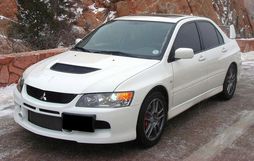
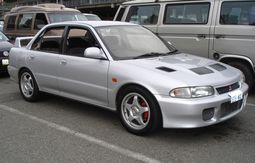
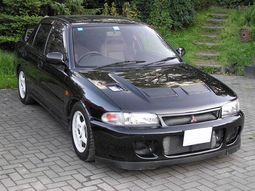
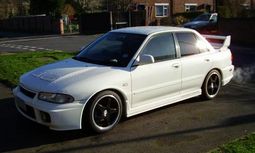
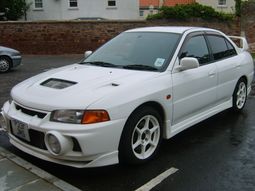
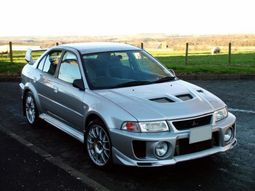
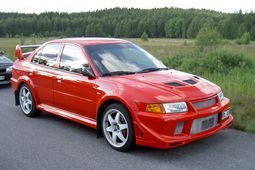
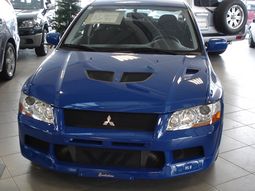
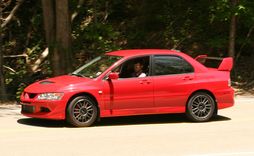
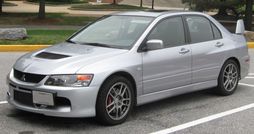
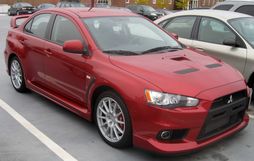
|